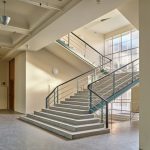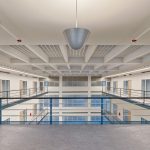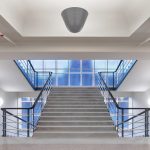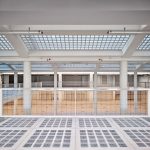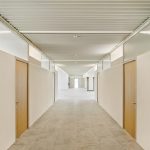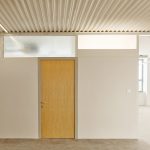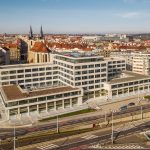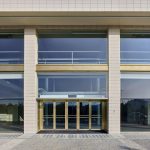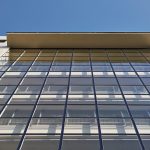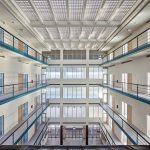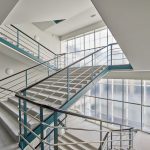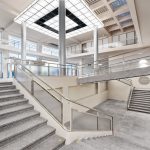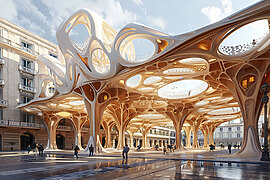The palace of Electric Enterprises is one of the largest and most important monuments of Czech interwar functionalist architecture. The idea of the restoration was to present significant premises in authentic reconstructed form and modern, functional building, providing above-standard spaces. The project brings new techniques and technologies, indicates a way to the renovation of similar interwar buildings.
Studio: TaK Architects
Author: Marek Tichý
Website: www.tak2002.cz
Co-author: Pavla Brůžová
Jana Kulíková
Design team: AED Project a.s, www.aedproject.cz
Project location: Bubenská 1, 170 00 Prague 7
Project country: Czech Republic
Project year: 2017
Completion year: 2020
Client: CPI Property Group
Collaborator: Technical design: AED Project, www.aedproject.cz
Statics: Building STATICS, www.building-statics.cz
Heating and cooling: Lubomír Guziur
Air ventilation: František Kubec
House installations: IKKO [Bohuslav Kouba], www.ikko.cz
Heavy current system: ACDC [Jiří Schaffer, Ivana Kadlecová]
IT design: Forgys [Ivo Tříska]
BMS: RM Plan [Vladimír Píša], www.rmplan.cz
Fire specialist: František Chuděj, Pavol Ondruš
Photographer: KIVA
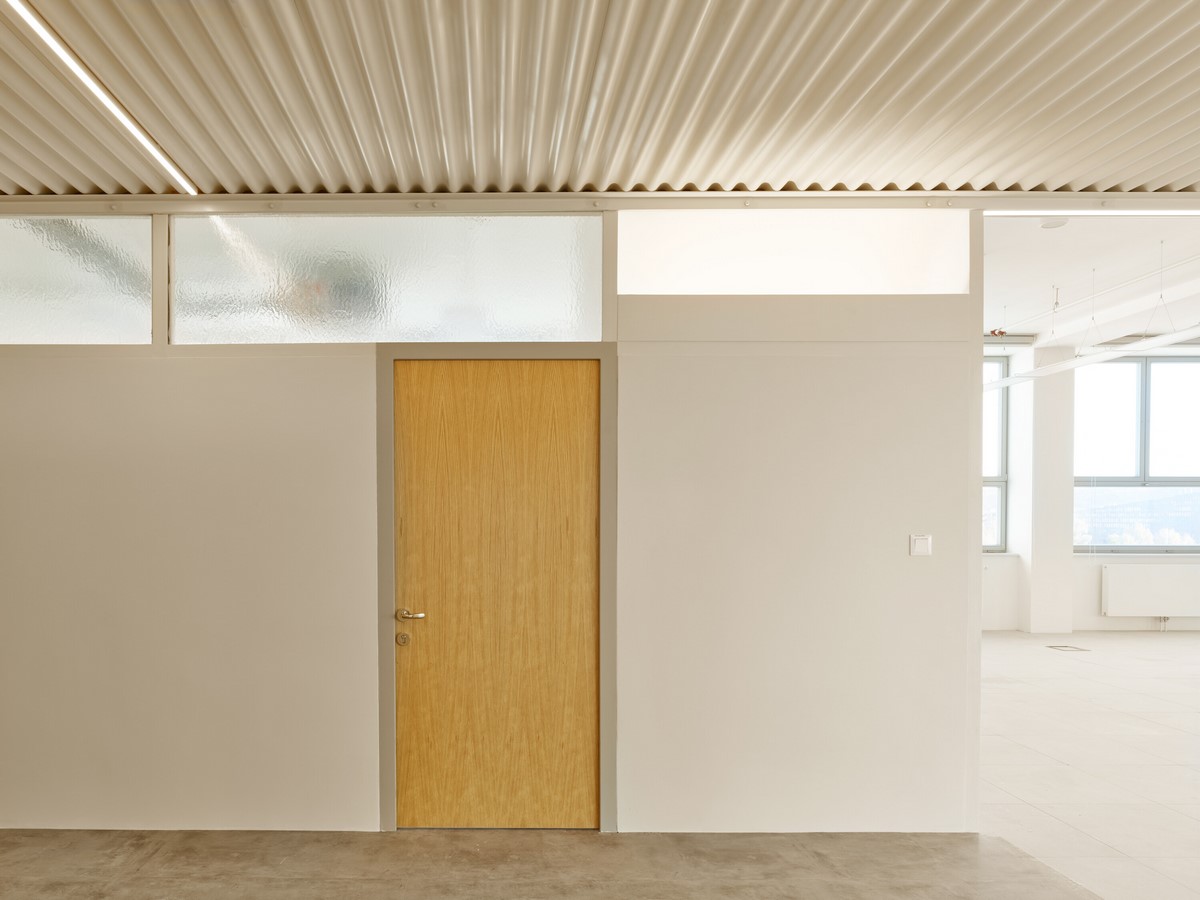
A breakthrough was the reconstruction of the cladding with an accent on architectural expression, but also the interiors joining authentic restoration and the details of new built-ins and functional parts. The core is the office part in the five-storey nave of the central hall lined with galleries around the perimeter. The dispositionally closed core is loosened towards the wings of the building and upwards into open layouts. The renovation includes adjoining spaces, former exhibition galleries, business units with relation to the exterior complemented by modern parterre detail.
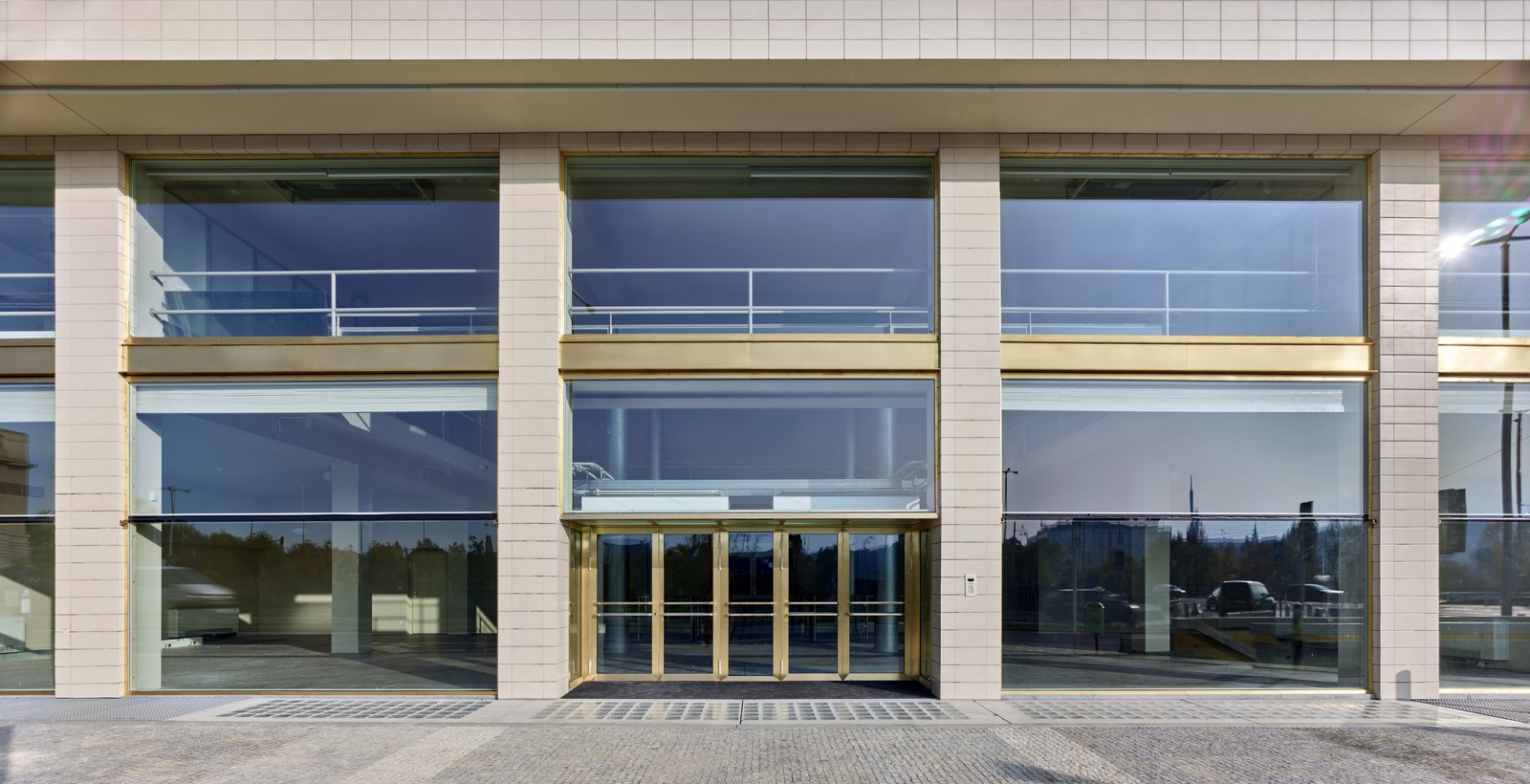
The building construction is a ferroconcrete monolithic skeleton based on concrete footings, supplemented on the last two floors by a steel skeleton. The main moments of the reconstruction associated with the partial operational conversion were the complete rehabilitation of foundations formed by aluminous concrete, replacement of the perimeter claddings and filling of openings, replacement of technological systems with regard to the valid fire technology and control legislation and the creation of automatic parking stacker in considerable parts of basements. The restoration was technically complicated as historical elements were supplemented by the current architecture. Total restoration of facades involves the development and production of copies of large wooden and steel windows, construction of new glazed roofs over the original glass-concrete roofs improved the thermal-technical quality in all atriums. The installed technologies represent a shift in economics and operational efficiency.
It is important to consider the structurally extensive and technically exceptional reconstruction and conversion of the Electric Enterprise Building from the point of view of interdisciplinary collaboration. This building can certainly be characterised as one of the largest and most technically demanding reconstructions of an object with special architectural or historic interest in the Prague area, among other things due to the construction intervention scale, involvement of specialized teams of different fields and a virtually laboratory search of the final solution has been conducted for many years. In this regard, it offers a multitude of new information about interwar architecture and the possibility of its renewal. The construction historians and restorers as well as colleagues from the field of structure failure, construction materials and construction laboratory were in this case pivotal. The task is specific not only for its contemporaneity, but mainly for the fact that the Electric Enterprise Building is a vast constructional complex. It was necessary to introduce new methodology for structural and historic analysis and documentation of individual elements and its group, for the usually applied methods would not be adequate or usable for an object of such magnitude. During a search for the reconstruction method, it is in general necessary to seek a solution that would not be applied sporadically or in a limited area, but which would be used on a massive scale in areas of many thousands of square meters, and in a supply comprising generally of hundreds and thousands of pieces. Thus, construction and technological techniques predominantly need to be realised by regular construction suppliers or selected suppliers under the scrutiny of renovators.
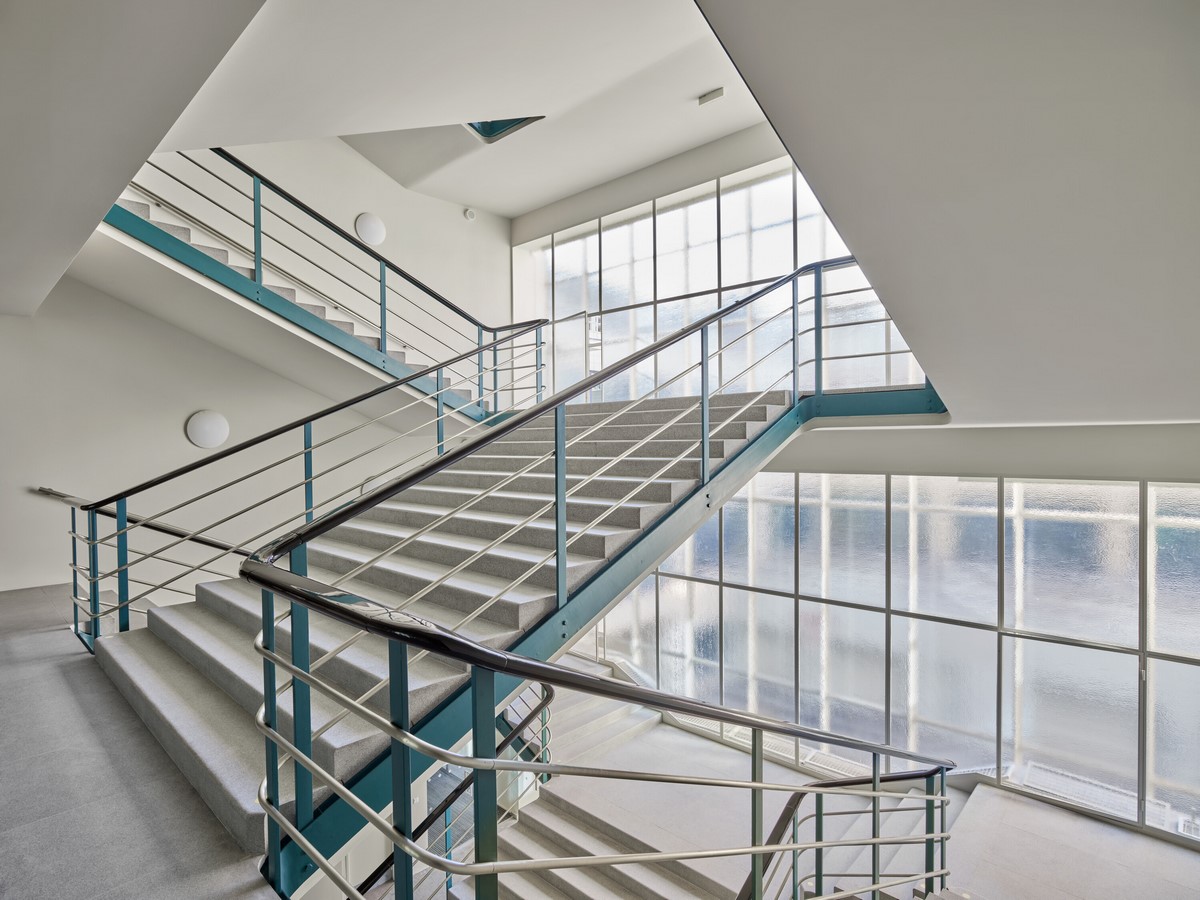
Renewal and preservation of the Czech interwar architecture building fund – which is outstanding not only for the quality of its work, but also serves as a proof and legacy of the First Czechoslovak Republic – is nowadays a new task, a challenge facing architects, construction professions and historical preservation. With regard to architecture and technical field, the majority of objects are more than just a prototype or, if you want, a manifesto. Rather plentiful are the buildings which cannot be renewed due to inappropriately selected technical solutions at the time of their construction. Nevertheless, it is necessary to preserve them, as they are an unforgettable part of historic architecture.
Materials
white brass – cladding of glass walls and shop windows, railings
ceramic tiling – facade
wood, steel – windows, strip windows, shop windows
reinforced concrete – ceilings, walls
corrugated iron – ceilings
oak veneer – doors, furniture
granite – stairs, floors
Products and Brands
wooden windows — Cadre\www.cadre.cz
glass walls — Termetal\www.termetalmoravia.cz
Imagin Misty patterned glass — AGC\www.agc-yourglass.com
restoration work — BEKR Art, Hefaistos, Kamono
Knot lights above the bar — Brokis\www.brokis.cz
Additional information
The project has won a number of national awards, including the title of Building of the Year and Partimonium pro futuro from the National Heritage Institute.
About studio
The TaK Architects office was established in 2002 by a team of architects and construction engineers who had been working together for many years. The main philosophy of the company is the belief that a house is a collective work, a variable of the client’s demand. Due to the architect’s fantasy, it gains contours and transforms into real space. During its existence, the office has realised hundreds of projects, and received many national and international awards. By design it engages in the context of historic and contemporary architecture, seeking balance between historic preservation, requirements of contemporary functional construction and authentic manifestation. The work is simultaneously a dialog – it is part of the work in regards to the client and an interdisciplinary cooperation. The experience of more than eighty projects – their reconstruction, rebuilding of historically protected objects, conversion and completion of historical areas in the area of Prague and Central Bohemian Region – is presented in thematic exhibitions, lectures and in publications.
An architect and university educator Marek Tichý is involved in the Czech Technical University in Prague, faculty of architecture. In 2002 he established and to this day conducts his own architectonical office TaK, which has long-term addressed contemporary and historical architecture. He presents the search for authentic architectonic manifestation, balance between historical preservation and requirements of contemporary and functional construction not only in his work, but also in thematic exhibitions, lectures and in publications.
About the Czech Architecture Award
The mission of the Czech Chamber of Architects (CCA), an autonomous professional body with transferred executive powers, is to cultivate public works culture in the Czech Republic and support the pursuit of excellence. In keeping with this mission, it has announced the seventh edition of the Czech Architecture Award (CAA), which extends the Chamber’s promotion of quality work by established and emerging architects. The CCA aims to map architectural production in the Czech Republic and to present quality works and human interventions in urban and natural environments to the professional and lay public and to representatives of local and national administrations.
This competition showcase is open to all architectural works completed in the Czech Republic in the previous five years (2017–2021). Previously entered works may be re-entered, provided they were not shortlisted.
As in previous years, works by Czech architects were assessed by seven accomplished foreign architects. The jury’s principal task was to nominate approximately 30 projects, which were presented at the nomination event and are included in a touring exhibition and the Award catalogue.
The jury then selected approximately 5 buildings, whose architects would be recognised as Finalists, from which they would select the winner.
The submitted works are not assessed within any categories.
The activities of the professional Academy of the Czech Architecture Award established by the Board of the Czech Chamber of Architects are an essential aspect of the CAA. Renowned figures active in the field of architecture (more than 300 academics, including architects, publicists, architecture critics and other professionals) can actively look for interesting buildings and implementations and enter them in the competition if the architects do not enter themselves.








